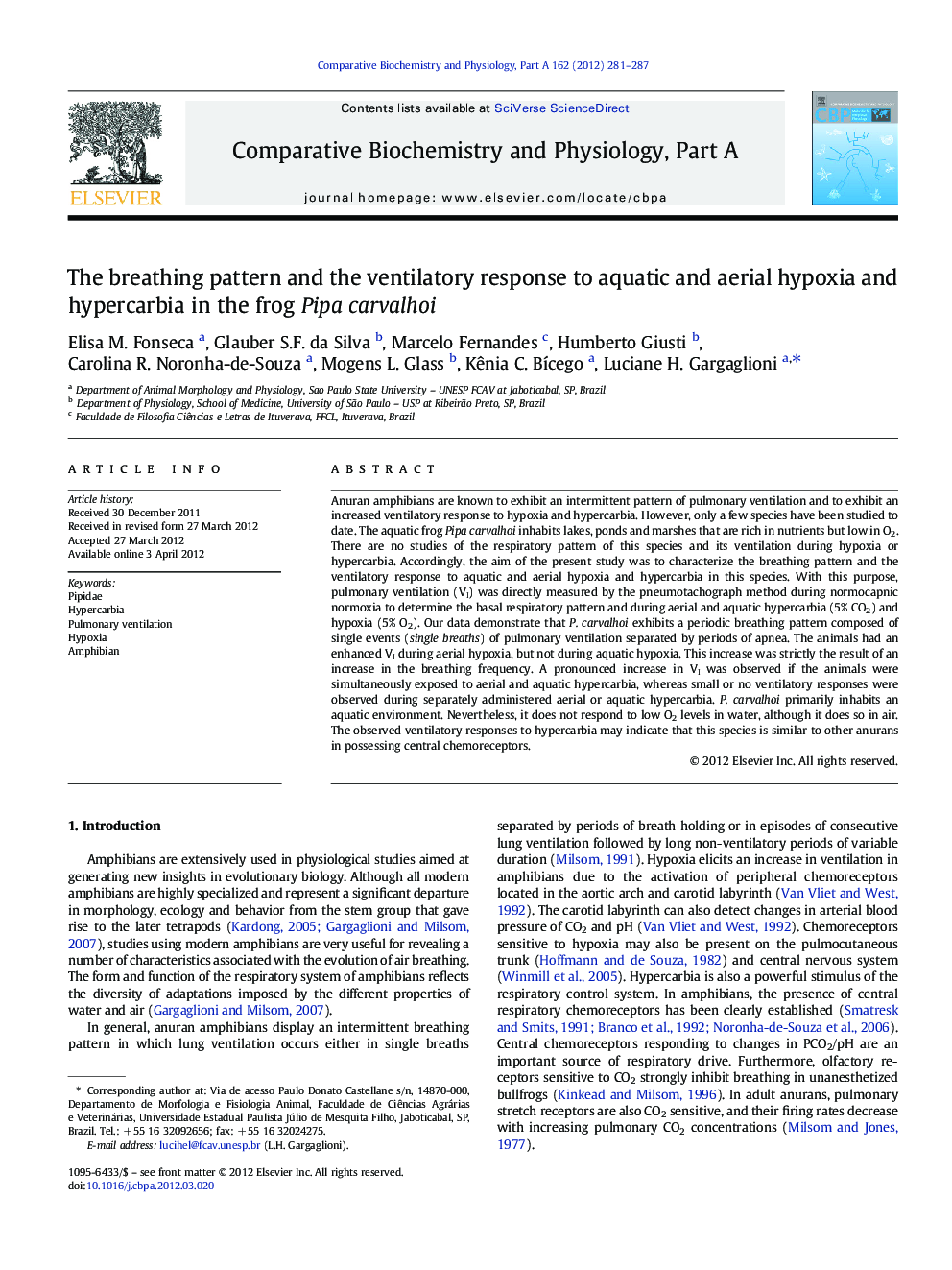| کد مقاله | کد نشریه | سال انتشار | مقاله انگلیسی | نسخه تمام متن |
|---|---|---|---|---|
| 10818924 | 1060280 | 2012 | 7 صفحه PDF | دانلود رایگان |
عنوان انگلیسی مقاله ISI
The breathing pattern and the ventilatory response to aquatic and aerial hypoxia and hypercarbia in the frog Pipa carvalhoi
دانلود مقاله + سفارش ترجمه
دانلود مقاله ISI انگلیسی
رایگان برای ایرانیان
کلمات کلیدی
موضوعات مرتبط
علوم زیستی و بیوفناوری
بیوشیمی، ژنتیک و زیست شناسی مولکولی
زیست شیمی
پیش نمایش صفحه اول مقاله

چکیده انگلیسی
Anuran amphibians are known to exhibit an intermittent pattern of pulmonary ventilation and to exhibit an increased ventilatory response to hypoxia and hypercarbia. However, only a few species have been studied to date. The aquatic frog Pipa carvalhoi inhabits lakes, ponds and marshes that are rich in nutrients but low in O2. There are no studies of the respiratory pattern of this species and its ventilation during hypoxia or hypercarbia. Accordingly, the aim of the present study was to characterize the breathing pattern and the ventilatory response to aquatic and aerial hypoxia and hypercarbia in this species. With this purpose, pulmonary ventilation (VI) was directly measured by the pneumotachograph method during normocapnic normoxia to determine the basal respiratory pattern and during aerial and aquatic hypercarbia (5% CO2) and hypoxia (5% O2). Our data demonstrate that P. carvalhoi exhibits a periodic breathing pattern composed of single events (single breaths) of pulmonary ventilation separated by periods of apnea. The animals had an enhanced VI during aerial hypoxia, but not during aquatic hypoxia. This increase was strictly the result of an increase in the breathing frequency. A pronounced increase in VI was observed if the animals were simultaneously exposed to aerial and aquatic hypercarbia, whereas small or no ventilatory responses were observed during separately administered aerial or aquatic hypercarbia. P. carvalhoi primarily inhabits an aquatic environment. Nevertheless, it does not respond to low O2 levels in water, although it does so in air. The observed ventilatory responses to hypercarbia may indicate that this species is similar to other anurans in possessing central chemoreceptors.
ناشر
Database: Elsevier - ScienceDirect (ساینس دایرکت)
Journal: Comparative Biochemistry and Physiology Part A: Molecular & Integrative Physiology - Volume 162, Issue 3, July 2012, Pages 281-287
Journal: Comparative Biochemistry and Physiology Part A: Molecular & Integrative Physiology - Volume 162, Issue 3, July 2012, Pages 281-287
نویسندگان
Elisa M. Fonseca, Glauber S.F. da Silva, Marcelo Fernandes, Humberto Giusti, Carolina R. Noronha-de-Souza, Mogens L. Glass, Kênia C. BÃcego, Luciane H. Gargaglioni,